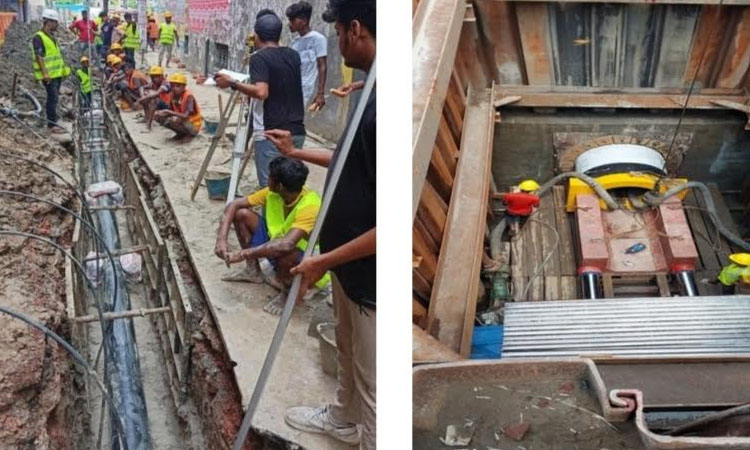News Flash

By S M Zahid Hossain
KHULNA, March 12, 2025 (BSS) - The construction of the sewerage system of the Khulna Water Supply and Sewerage Authority (KWASA) has been progressing fast for improving the quality of life and maintaining environmental balance by protecting the public health.
"Khulna Sewerage System Development Project", being implemented by KWASA with cost of Taka 2,334.14 crore, will develop a new sewerage system covering the industrial city, Superintending Engineer of KAWSA, Khan Selim Ahmed told BSS today.
The project is expected to end by 2025.
Under the project, two sewage treatment plants are being constructed with a capacity of 80,000 cubic meters per day and one fecal sludge treatment plant of 160 cubic meters to attain the cherished goal.
Besides, construction of 269 kilometers sewer network and around 27,000 property- level sewer connections will develop the capacity of the KWASA together with raising awareness on sanitation and hygiene.
Narrating the progress, Khan Selim said, at least 65 kilometers High-density polyethylene (HDPE) pipeline has been installed, out of 80 km. A total of 2200 manholes and 3400 house connections have been installed under Swer Network, Sewage Pumping Station and Service Connection package-1, adding that the work progress is 68 percent now.
Under Sewer Network, Sewage Pumping Station and Service Connection package-2, a total of 72 km (HDPE) pipeline has been installed out of 93 km, 2668 manholes and 2522 house connections have been installed. Work progress is 60 percent.
Among the construction of 2 sewage treatment plants, the land filling of Sewage Treatment Plants-1 (STP-1) with a capacity of 28 MLD at the city's Mathabhanga site, pre-cast pile of all structures, pre-cast pile drive of boundary wall has been completed.
In addition, the structure of the Sequential Batch Reactor (SBR), chlorination building, chlorine contact tank, sludge sump pump, dewatering building, workshop building, generator building, blower building, fecal sludge sump and pump, fecal sludge thickener, fecal sludge tank, sludge storage tank has been completed and the brickwork of equalization tank, administration building and boundary wall is in progress.
The land filling of STP-2 with a capacity of 52 Million liters per day (MLD) at the city's Thikarabad site and pre-cast pile casting and driving of all structures have been completed and the work of pre-cast pile drive of the boundary wall is in progress.
Moreover, the work of SBR, sludge sump pump, buildings of dewatering, workshop, generator, sludge sump and pump, equalization tank and boundary wall structure is in progress. The progress of construction of 2 STP is 60 percent.
While talking to BSS, the Managing Director of KWASA and additional divisional commissioner (General) of Khulna Md Hossain Sawkat said that after completing the project city dwellers will enjoy a hygienic, environmental and healthy sewerage system.
"It will also help to create a healthy atmosphere and to help remove water logging during the rainy season," he added.
Ultimate goal of the project is to ensure improved public health protection and mitigate environmental pollution in addition to promoting the development of the socio-economic system.
It will also ensure hygienic and environmentally safe disposal of the sewage in the city through the sewer network besides facilitating people's livelihood by implementing a sustainable sewage system.
There are provisions for developing institutional capacity of KWASA for efficient management of sewerage service and to inform the city dweller regarding the service of the sewerage system to optimize the benefit.
Established in 2008, KWASA is committed to ensure service to all customers through the supply of a sufficient amount of potable water and proper sewage solutions.
Meanwhile, the KWASA is supplying 110 million liters of water per day to 40,368 house connections through a pipeline network, comprising 41 production pumps and 900 hand tube-wells, benefiting 1.10 million populations in 45.60 square km at present.
Apart from this, there is a water treatment plant and a water quality-testing laboratory to ensure quality of both production and supplied water.